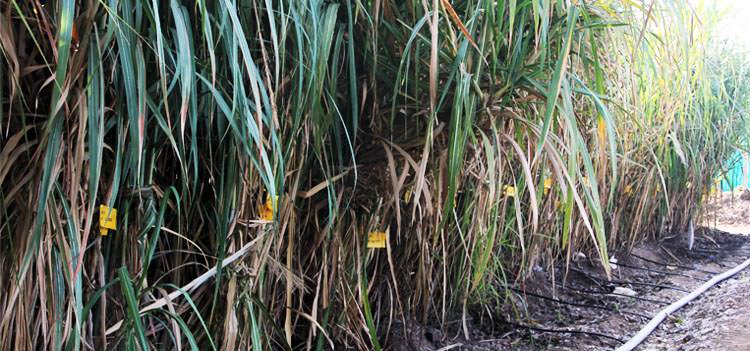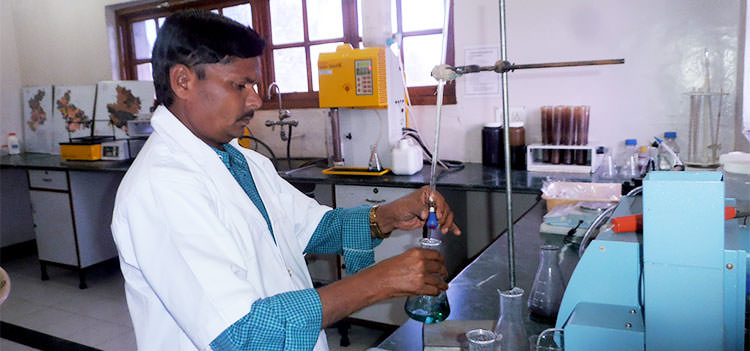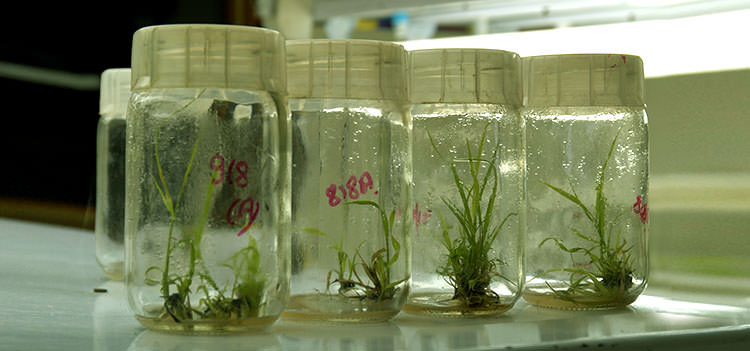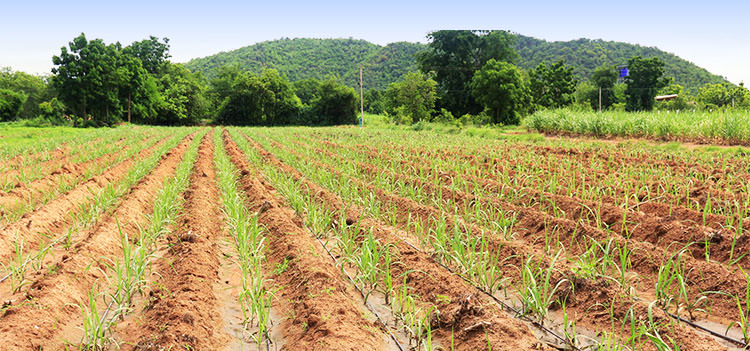Agriculture Research
Working of renewable resources from agriculture is fundamentally different from working on fossil resources. With agriculture derived feedstock, the earth is in a position to give us the same resources year after year, and possibly more, if we use it well. Godavari Biorefineries funds an agriculture research Institute KIAAR, where research is performed on developing new varieties of sugarcane or even energy canes, soil testing and agronomy, intercropping with other crops, and other practices. In doing so, our focus is on ensuring that the crop is suitable for the products we seek to make, the earth and soil remain healthy or become healthier, and the farmer achieves greater prosperity.
Broad areas of our agricultural research areas include:
Testing new varieties of sugarcane
KIAAR is a voluntary centre for testing sugarcane varieties for the peninsular zone (the zone in which we are located) under the All India Coordinated Research Project on Sugarcane (AICRP-S) of the Indian Council of Agricultural Research. Through this programme, we get elite sugarcane clones evolved at the Sugarcane Breeding Institute in Coimbatore and several research stations of the State Agricultural Universities situated in the Peninsular Zone. We test these varieties as per the technical programme given by AICRP-S and thus help in identifying high yielding and high
quality varieties suitable for the zone. Thus we have access to all the new promising varieties developed. Further, we also get constraint-specific varieties from SBI and other research institutes and evaluate them in our research farm. Besides this, we conduct on-farm trials of selected varieties in our area.
Testing Energy canes

We have entered into a memorandum of understanding with SBI to test new energy canes. Through this programme we have obtained energy types, which consist of high biomass types as well as dual purpose ones (ethanol and high fibre). The former can be good a second-generation feedstock for ethanol, and the latter, for cogeneration and ethanol from available juice.
Agronomy

Soil Testing
We have a well equipped soil and water testing laboratory. The staff of the Cane Department collects soil samples from our farmers’ fields of different clusters and supplies them to the laboratory regularly. The samples are processed and analyzed for pH, electrical conductivity and available nutrients (N, P and K, and important micronutrients.). Based on the test results, fertilizer and amendment recommendation reports are prepared and passed on to the farmers through the cane department.
Learning and applying traditional and organic techniques
Indian agriculture is replete with a great number of traditional farming practices, which are slowly vanishing with the advent of modern high chemical input driven agriculture. The use of organic manures is becoming less. Indiscriminate use of chemical fertilizers and pesticides is affecting soil health. Thus, there is an urgent need to learn and revive traditional practices and use more organic matter in conjunction with chemical inputs in growing crops.
We are documenting indigenous knowledge pertaining to organic agriculture and producing such inputs with the farm-available organic sources and experimenting on their use in an integrated manner to augment productivity and soil health.
Altering crop geometry to improve yield
Crop geometry decides plant population, leaf area index, radiation utilization, and land space utilization. Thus, it is an important consideration in sugarcane production. Appropriate crop geometry is also important to carry out various cultural operations. With the introduction of mechanization and drip irrigation, wide row geometry has become a necessity. We have standardized the technology and have promoted in the areas. Besides this we are experimenting with new varieties for wide row planting.
Suggesting intercrops and rotation crops

To make the best use of the production resources and improve profitability of sugarcane cropping systems, we have experimented with intercrops and rotational crops. Growing short duration pulses and vegetables as intercrops in wide row planted sugarcane has been found remunerative besides improving soil health.
So also, rotations with leguminous crops and green manure crops, turmeric and soybean have proven to be profitable and useful in improving the cane yields and sustaining soil fertility.
Using tissue culture and seed treatment mechanisms

Through meristem culture (tissue culture) and heat therapy, we produce disease free foundation seeds of sugarcane and grow secondary and commercial nurseries in the farmers’ fields for commercial planting and thus run the three tier Nursery programme effectively.
This programme helps us to keep diseases (like grassy shoot, ratoon stunting and yellow leaf) at bay and sustain yields.
Drip Irrigation

Drip irrigation is a process in which water is delivered through drippers right near the root zone. This saves around 40% water and gives increased yields of around 20%. We have worked on the drip irrigation technique which is being adopted by considerable number of farmers. We are experimenting on providing growth promoting substances and fertilizers through drip systems.
Using Internet of Things to better understand methods of farm control
We are working on Internet of Things (IoT) for agriculture, in particular to sugarcane, in collaboration with K J Somaiya Institute of Engineering and Information Technology, Mumbai. Our tissue culture laboratory lighting system has been brought under IoT. Further soil test data reporting and recommendations, drip irrigation systems, soil moisture measurements for irrigation control, etc are being worked out which eventually would be taken to farming community.
- Our efforts in collaboration with KIAAR has led to a spectacular yield increase from 50 tha-1 in early 70s to 100 t ha -1 at present and vastly improved the economic condition of the farmers.
- Better agronomic packages and a superior varietal complex had increased the crushing days from 128 days to around 180 days.
- The sugar recovery has made a quantum jump from 9.93% to 11.25% during the past four decades. The drip irrigation technology besides improving yields has the potential to save water upto 50%.
- Drip fertigation technology saves around 25% fertilisers which again is being adopted widely by the farmers.





